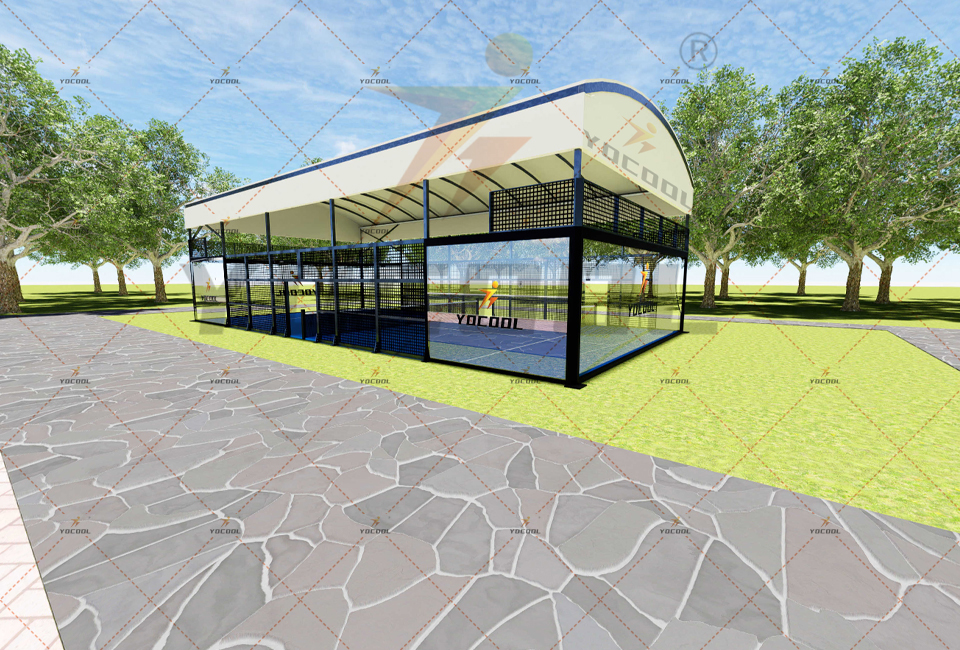

Exploring the Joy of Paddle Ball Courts
Paddle ball, a sport that has gained popularity in recent years, is played on a court that is a unique blend of tennis, squash, and racquetball. This engaging sport is not only a thrilling workout but also a social activity that brings players together. In this article, we will explore the key features of a paddle ball court, the rules of the game, and the benefits of playing paddle ball.
At its core, a paddle ball court is typically enclosed by four walls, creating a dynamic playing area that encourages fast-paced action and strategy. The key dimensions of a standard paddle ball court are 20 feet wide, 44 feet long, and 12 feet high, providing enough space for players to maneuver while ensuring the game remains intense and exhilarating. The playing surface is usually made of wood or a synthetic material, allowing for optimal ball bounce and player movement.
One of the most distinguishing features of the paddle ball court is its use of walls. Players can hit the ball off the walls, adding a layer of complexity to the game. This feature allows for a variety of shots, including strategic rebounds and tricky angles, making paddle ball both an art and a sport. The walls also create a unique social dynamic, as the game encourages conversation and camaraderie among players, fostering a sense of community.
Playing paddle ball requires a paddle, which is typically solid and wider than a tennis racquet, with no strings. The ball used in paddle ball is slightly smaller than a tennis ball and is made of solid rubber, providing a distinctive feel and bounce. The simplicity of the equipment makes paddle ball accessible to people of all ages and skill levels, ensuring that everyone can participate and enjoy the game.

The rules of paddle ball are simple but essential for maintaining a fair and competitive environment. The game can be played as singles (one-on-one) or doubles (two-on-two). A match is usually played to 11, 15, or 21 points, depending on the tournament or informal agreement among players. Points are scored when the opposing player fails to return the ball in play. The game begins with a serve, from behind the service line, bouncing the ball off the wall before it crosses the line – setting the stage for strategic play.
One of the greatest benefits of playing paddle ball is the physical exercise it provides. As a high-energy sport, it engages various muscle groups and improves cardiovascular health, coordination, and agility. Players often find themselves sprinting, lunging, and diving, making it a fantastic workout that doesn’t feel like a chore. Additionally, the sport encourages mental agility as players devise strategies and anticipate their opponent's moves.
Beyond the physical benefits, paddle ball also offers significant social advantages. Many players find joy in forming friendships and networks through the sport, as the paddle ball community is welcoming and enthusiastic. Playing together fosters teamwork, communication, and trust among players, enhancing the overall experience.
In conclusion, paddle ball courts represent more than just a place to play; they are vibrant hubs of activity, community, and joy. With their enclosed walls, fast-paced gameplay, and growing popularity, paddle ball courts are a testament to how sport can bring people together. Whether you’re seeking a competitive challenge or a fun way to stay active, paddle ball offers a rewarding experience for all involved. So grab a paddle, invite a friend, and head to your local court — the game awaits!
Durable Industrial Flooring Solutions for Factories Expert Installation
Premium Rubber Floor Mats Durable & Slip-Resistant Protection
Rubber Brick Non-Slip & Eco-Friendly Flooring Solutions
Premium Rubber Floor Mats Durable & Non-Slip Protection
Durable Rubber Floor Mats Slip-Resistant & Heavy-Duty
Industrial Flooring for Racquetball & Squash Facilities Durable, Safe Solutions